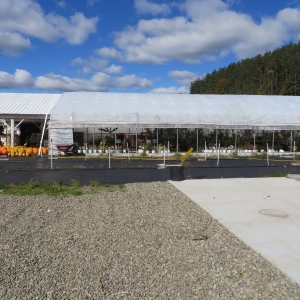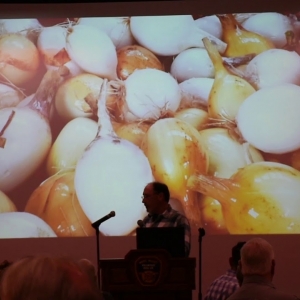Other Ag News: USDA Staffing Crisis: Research Agencies Face Steep Losses as Reorganization Advances
On July 24, 2025, Secretary Rollins released a memo (SM-1078-015) describing the planned reorganization of the U.S. Department of Agriculture (USDA) staff, drafted without any consultation with farmers or other stakeholders. USDA has already lost more than 20,000 staff since January 2025 and if the reorganization moves forward as planned, it will result in the likely loss of thousands more staff. This is the second post in a series discussing the loss of USDA staff since January 2025 and the expected impacts of the proposed USDA reorganization across issue areas. This post examines staffing losses and planned cuts across the research agencies at USDA and their devastating impacts on agricultural research and innovation. Our previous post describes the staffing losses across the USDA and states.
USDA’s research agencies – the National Agricultural Statistical Service (NASS), Economic Research Service (ERS), Agricultural Research Service (ARS), and National Institute of Food and Agriculture (NIFA) – have been hit particularly hard by recent staff losses and have significant cuts planned in the reorganization. These research staff and sites provide the human capital and infrastructure for agricultural research as well as data collection and analysis for commodities and rural communities. Unfortunately, recent history has shown that staff losses in these agencies leads directly to reduced productivity and support for stakeholders. In this post, we examine the toll of staffing declines and proposed cutbacks in USDA research agencies, and what they mean for the future of agricultural knowledge and innovation.
After widespread concerns about the proposed reorganization, USDA opened an adhoc public comment opportunity. The National Sustainable Agriculture Coalition (NSAC) encourages organizations and individuals to submit their comments, questions, and concerns regarding the reorganization to USDA at reorganization@usda.gov by September 30, 2025. NSAC remains concerned about the lack of transparency involved in this comment period, given that the opportunity for public comment has not been formally provided through the Federal Register, as is standard practice for proposals of this scope.
Research Staff Have Been GuttedThe four major research agencies of USDA have already lost approximately 23% of their staff since January 2025. 1,600 employees left the research agencies through DOGE’s Deferred Resignation Program (DRP). DRP offered federal employees fully paid administrative leave through September 2025 if employees voluntarily resigned their positions. 351 research agency staff accepted the DRP in the first round beginning in January 2025 and an additional 1,249 research staff accepted the second round of DRP in April 2025.
Figure 1: Research Staff Losses
According to the Office of Personnel Management (OPM), approximately 370 additional staff separated from the research agencies between January and March 2025. Separations include staff who retired (voluntary, early, or for disability), quit, had their contracts expired or terminated, were fired, transferred to a different agency, or otherwise separated from employment.
Table 1: Research Staff Losses by Agency
NASS, the internal statistical branch of the USDA, has lost the highest percentage of staff since January 2025 among research agencies, losing approximately 30% of their staff to DRP and 4% additional staff who separated from the agency. NASS collects hundreds of surveys on agriculture and food and prepares a wide range of reports on virtually every component of American agriculture. They administer the Census of Agriculture every five years, the only dataset that provides information on every American county and farm over time. They also collect and analyze data on every commodity and market in American agriculture. NASS provides essential unbiased data on US agriculture that undergirds farmers’ decisions and the decisions of policymakers.
ARS, the internal in-house scientific research agency of the USDA, has lost the largest number of employees since January 2025 among research agencies. ARS lost 1,225 employees to DRP and an additional 298 staff who separated from the agency between January and March 2025. ARS’s mission is to “deliver scientific solutions to national and global agricultural challenges” and they employ a wide range of scientists and staff at a network of research sites throughout the country, often in partnership with universities and private sector companies. The loss of ARS staff undermines the ability of the agency to fulfill its mission and provide the research needed by American farmers and ranchers. ARS researchers, in particular, are highly specialized scientists with skills that are very difficult to replace.
The loss of ARS scientists means that several research projects vital to the resilience of American agriculture have already stopped. In an interview with Wyoming Public Radio, two former ARS researchers talked about the losses caused by the loss of staff such as themselves. According to one scientist: “I worked directly with a lot of farmers, visiting farms, going to meetings of farmers, and making sure that they had the most up-to-date research to inform their management decisions. Also listening to what challenges they were facing, and making sure that those challenges were being reflected in the research that the Agricultural Research Service was doing [and] bringing those concerns back to the researchers.” The scientist further shared: “All my projects revolved around helping smaller farmers deal with the impacts of drought in this region and all of those projects have been cancelled.”
The nearly 2,000 employees lost from USDA research agencies directly hinder the ability of the department to fulfill its mission to “advance scientific knowledge related to agriculture.” These staffing losses and administrative setbacks have already led to significant disruptions including delaying or deferring several NIFA research programs for fiscal year 2025. The Foundational and Applied Science Program, for example, was delayed so significantly that the fiscal year 2025 program was skipped altogether and the request for applications is now for fiscal year 2026.
The Reorganization Will Further Degrade Research AgenciesUSDA research agencies are already experiencing significant losses in their ability to serve stakeholders and the planned reorganization will cause further damage.
ARS is hit particularly hard by the planned reorganization. The reorganization includes a plan to close the Beltsville Agricultural Research Center (BARC), located in Beltsville, Maryland. BARC has operated since 1910. Comprising approximately 6,000 acres of agricultural research fields and facilities, BARC is the largest ARS research facility and hosts research on food animal production, animal health, entomology, food safety, water management, soil quality, air quality, rangeland systems, sustainable agriculture, plant genetics, plant diseases, crop protection, crop production and virtually every aspect of agricultural production systems.
BARC has produced impactful research for over a century, benefiting American farmers and agriculture. For example, BARC researchers developed and licensed a patented antibody designed for wide-spectrum identification of potyviruses, a major group of plant viruses with high economic impact. These anti-viral technologies are now widely developed and sold by Agdia to detect and prevent potyviruses in a variety of crops such as beans, potatoes, and industrial hemp and prevent billions in lost productivity every year.
Photo by Kaitlan Balsam on UnsplashClosing and relocating the Beltsville facility will be extremely difficult and costly and will cause unavoidable damage to research productivity. Long-term field studies are particularly important to agricultural research to understand the long-term functioning of agricultural systems such as soil health and pest burden. The long-term field research at Beltsville cannot simply be relocated, and losing these field sites means losing irreplaceable scientific knowledge. Relocating facilities such as the Electron and Confocal Microscopy Unit (ECMU) would be extremely difficult and expensive, if possible at all. While the USDA reorganization plans to close and relocate BARC over several years to minimize research disruptions, experts are highly doubtful that the closure would be able to do so or would generate any cost savings.
Despite claiming to want to move the Department closer to farmers, the reorganization also calls for the closure of ARS Area Offices. ARS is currently divided into five geographic areas: Northeast, Southeast, Midwest, Plains, and Pacific West. Each area has an Area Office that oversees the facilities and staff in that region, ensuring that the research addresses regionally significant topics and problems. Closing Area Offices would undermine the ability to prioritize regional issues and weaken connections to farmers and stakeholders in the region. It would also mean administrative processes such as hiring and facilities management would be funneled through a single national office, creating delays and inefficiencies and would undermine the important regional partnerships and networks with collaborators such as land-grant universities. Closing ARS Area Offices will not “streamline” services, it will weaken local accountability and slow down work.
Likewise, the reorganization calls for the closure of NASS regional field offices to be replaced with offices in five new USDA hubs. NASS has twelve regional field offices in the country, each responsible for the statistical work in that region. These field offices oversee the data collection and management in the states of their region and provide the data and statistics for those states. The field offices are essential to maintaining stakeholder relationships and making sure that farmers and ranchers in every state and region are adequately represented in national statistics. Consolidating NASS offices to the newly proposed hubs in Raleigh, North Carolina; Kansas City, Missouri; Indianapolis, Indiana; Fort Collins, Colorado; and Salt Lake City, Utah would leave large swaths of the country unrepresented. Farmers and ranchers in the Northeast and West Coast, in particular, would have inadequate representation to ensure they are adequately included in agricultural statistics.
NASS regional offices are essential to improving farmers’ trust of the agency and to boosting survey response rates from farmers. Ensuring every farmer is counted in national statistics is essential and regional offices are vital to that effort.
The Deterioration Continues: Staff Losses at ERS and NIFA Since 2019 RelocationsDespite significant public outcry, ERS and NIFA were relocated to Kansas City, Missouri in 2019 during the previous Trump Administration. ERS provides research on economics and agriculture, producing research on future commodity price projections, farm income, and essentially all aspects of American agriculture and rural communities. The economic reports and research generated by ERS are used by farmers, policymakers, and other stakeholders as they make major decisions for the agricultural economy such as changes to commodity programs or loans. NIFA oversees the department’s competitive grant programs, investing in research, education, and extension programs for American agriculture. NIFA funds universities and other partners to advance agricultural science, innovation, and education nationwide.
This relocation of ERS and NIFA led to hard-learned lessons concerning how destructive relocations can be. According to the Government Accountability Office (GAO), these staff losses reduced the number of reports and articles generated by ERS staff in half and led to the loss or delay of several vital industry reports. The loss of these publications and reports meant that farmers and other stakeholders had to make risky decisions with less information. Within NIFA, the relocation led to delays and suspensions of several grant programs and payments. For example, land grant universities across the country struggled as NIFA’s Capacity Grants that support basic research facilities were delayed by more than a fiscal quarter, undermining the research and services of those universities. When NIFA grants are delayed or suspended, vital research is threatened and American farmers and the agricultural sector suffer.
It has taken years for ERS and NIFA to rebuild their capacity following the relocation and attempt to replace the lost institutional knowledge needed to serve American agriculture and stakeholders. But both agencies are again being decimated by staff losses. ERS has lost 27% of their staff to DRP and an additional 2% to other separations. NIFA has also experienced widespread staffing losses since January 2025. NIFA lost 11% of their staff to DRP and an additional 8% to other separations. These staffing losses have already led to delayed and deferred grant programs and will, we can infer based on recent history, lead to further losses in research productivity and delays that undermine American agriculture.
USDA’s Research, Education, and Economics mission area that houses ARS, ERS, NASS, and NIFA is tasked with providing reliable scientific research, data, and analysis for America’s farmers, ranchers, rural communities, and stakeholders. The staff in these agencies are highly skilled and specialized workers who are dedicated to public service. Each of the four agencies have already lost overwhelming numbers of staff and the planned USDA reorganization will further compromise their ability to fulfill their missions.
The post USDA Staffing Crisis: Research Agencies Face Steep Losses as Reorganization Advances appeared first on National Sustainable Agriculture Coalition.
Signup for the Ag Newsletter
Get the freshest farm news, events and updates from in and around Cattaraugus County, NY at least once a month! Go signup!
Other ways to stay connected:
Get Involved in Farming
Resources for Starting a Farm in Cattaraugus County
Profile of Cattaraugus County soils
Agriculture Career Exploration
Questions about farming? Find out Who to Call











